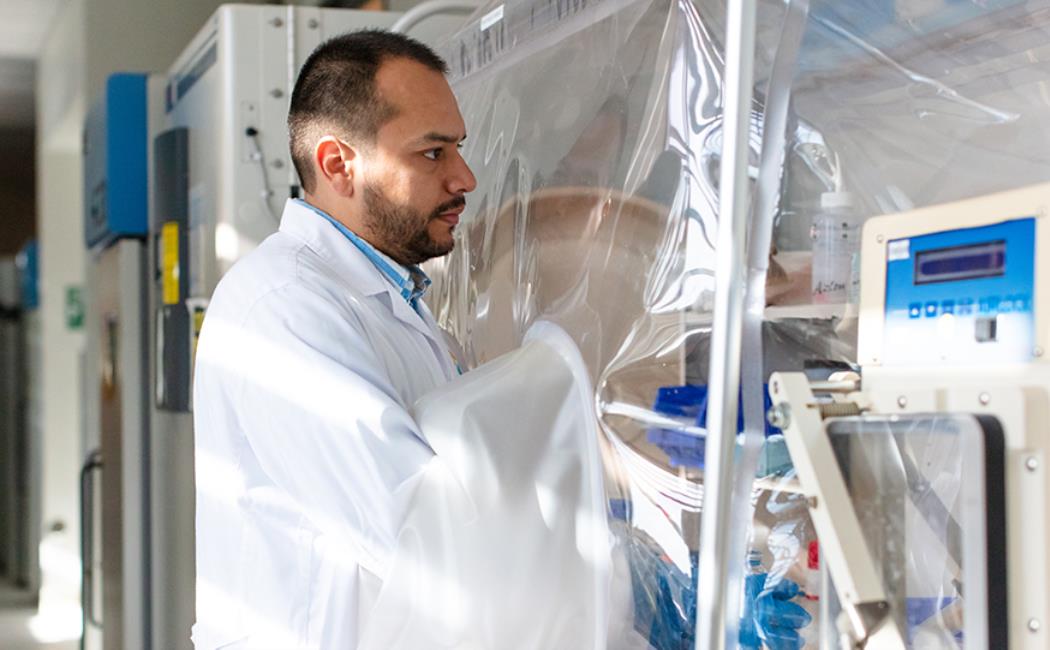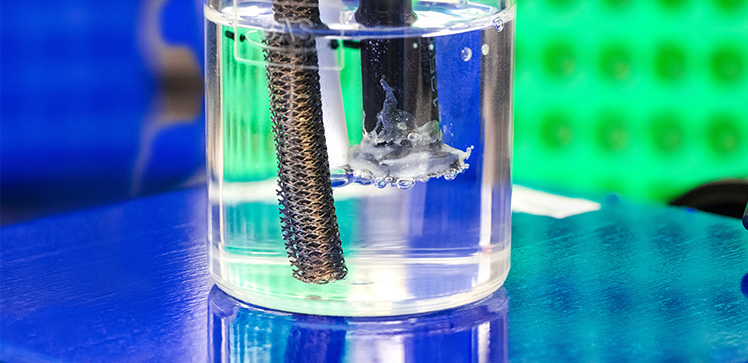


19 March, 2023

Using bacteria to produce metal nanoclusters could be a greener and more efficient way to produce precious catalysts used in industry.© 2023 KAUST; Anastasia Serin.
A biological method that produces metal nanoclusters using the electroactive bacterium Geobacter sulfurreducens could provide a cheap and sustainable solution to high-performance catalyst synthesis for various applications such as water splitting.
Metal nanoclusters contain fewer than one hundred atoms and are much smaller than nanoparticles. They have unique electronic properties but also feature numerous active sites available for catalysis on their surface. There are several synthetic methods for making metal nanoclusters, but most require multiple steps involving toxic substances and harsh temperature and pressure conditions.
Biological methods are expected to deliver ecofriendly alternatives to conventional chemical synthesis. Yet, to date, they have only led to large nanoparticles in a wide range of sizes. “We found a way to control the size of the nanoclusters,” says Rodrigo Jimenez-Sandoval, a Ph.D. candidate in Pascal Saikaly‘s group at KAUST.